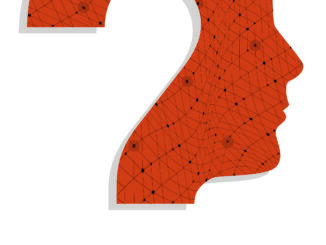
By Daniel Berkal, The Palmerston Group, Toronto, Ontario, Canada daniel.berkal@thepalmerstongroup.com
As researchers, it’s critical that we respond to the shifts in our own markets and social realities.
At the Palmerston Group, we’ve spent much of 2021 mastering the art of designing the rapid-fire, 10-minute interview, which we developed in response to new realities presented with the onset of the COVID-19 pandemic.
At the beginning of the pandemic, several new realities became apparent.
- Clients were pressed for results to justify their existence in a cost-cutting corporate world.
- Participant availability increased.
- Familiarity with online video became mainstream.
- There was constant competition for time. People were working from home; children were not in school.
- There were easy ways to manage scheduling and payments that did not involve third parties.
We realized these shifts and adapted much of what we were doing. We think you can benefit from this approach as well.
To conduct these rapid-fire interviews—in ten minutes or less—we took advantage of the now-everyday technologies that enable respondents to provide real-time responses on camera. We asked participants to answer targeted probes in their natural voice in real time through Zoom.
In turn, we were able to quickly turn around evocative, sharp deliverables with a montage of video clips from a variety of respondents to provide immediately meaningful insights to clients. Our clients were able to easily share these compelling deliverables with their broader teams to demonstrate, viscerally, the importance of market research and the insights it produces.
The quick-response interviews come with another key advantage. Aware of the shortness of the interview, participants tended to respond more quickly, suggesting that they were less able to self-edit responses for social desirability—to provide responses that tend toward first-brain responses.
Case Study
In practice, this entire process has been extremely effective. In one recent example, we worked with a client in the personal care space. The client needed quick insight into how women actively use a particular body-preening product to help them tailor their communication messaging in terms of language and relatability.
We quickly recruited fifteen consumers who met the criteria from our panel. We easily scheduled them in fifteen-minute blocks, a timeframe that was very easy for people to immediately commit to. Many of our interviews were conducted within an hour of the respondent being contacted.
The line of questioning was three quick questions; each question designed to provoke a visceral emotional response. There was no introduction or filler. No interview went over ten minutes. The end result was over three hours of densely packed, topically relevant content. We used transcription and video editing software to build three razor-focused (pun intended) reels around each topic.
Respondents were paid through e-transfer immediately after the interview.
 Benefits of the 10-Minute Interview
Benefits of the 10-Minute Interview
- Sometimes the small talk can take us away from the point.
Often in a traditional setting, or in traditional times, we concentrated on building respondent comfort. That’s not always necessary or even appropriate.
As respondents are generally in their own environments during research today, they’re already comfortable. Asking simple questions like, “How was your day?” or “What did you do this morning?” make much less sense when no one has gone anywhere or done anything. Asking these questions can often have the opposite effect from what was intended.
The younger generation is accustomed to opening up—it’s been part and parcel of their social upbringing in a social media world.
With the 10-minute interview, we kill the small talk to jump into the topic at hand.
- Ten minutes is sometimes all you need.
It’s just enough time to get one well-thought-out answer to one question. It’s the perfect amount of runway to allow one idea to take flight. It feels personal without feeling intrusive. As these are tightly scripted, you can get seven or eight minutes of usable content from each interview… about the same talk time that any average participant gets in any structured focus group.
It’s focused, so topics stay tightly on rails.
- Simple production, stellar results.
All the major video-conferencing platforms record and create audio and video tracks instantly upon completion. With auto-transcription software and time coding, you can quickly manage and compile the data as you go.
As everything is recorded, it’s incredibly easy to index and edit content into a client-facing sizzle reel.
- Turnaround time is key.
Today’s clients want fast turnarounds. To do this effectively, you have to look at the elements of research that take the most time and simplify them to make it a turnkey process.
In any research, recruiting is the most time-intensive element. To speed and ease this process, we’ve built a national, very active panel of potential participants (about 1,000 people).
People on the panel have been prescreened for their responsiveness and articulation abilities. We’ve set them up with a dedicated online portal where they can respond at their leisure to project requests. When we have a potential project, we post the topic on the portal and then screen through responses to find a match. Because all members are preregistered and prescreened, we can find most general recruits within a matter of minutes, assessing for their interest, geography, and demography. This allows us to avoid misrecruiting and overusing the same respondents. Because all responses are online, we already know that these people will have access and availability for a very short (ten-minute) interaction.
All scheduling is done through Calendly or Doodle. It’s fast and easy.
With this process, small projects can be fully recruited and scheduled within hours, and executed within days.
- Money talks. People listen.
We pay people immediately upon interview completion. Nothing is more annoying for a participant than having to wait for a check in the mail. With services like Venmo, PayPal, and Interac, it is possible to have participants receive their incentive funds into their account immediately following the interview. On the accounting end, it’s traceable. On the customer service end, it helps promote word-of-mouth excitement and good karma.
The most interesting element of this approach from a business standpoint is that as research is historically incentivized as a cost-per-minute transaction, with 10-minute interviews you can get significantly more bang for your buck.
If you were to offer a participant twenty dollars for a two-hour focus group, they would laugh you out of the room. However, for ten minutes of time, this can be an appealing carrot.
When to Use the 10-Minute Interview
Obviously, this research design is not appropriate for every topic or interaction. It would not be applicable for pharmaceutical work or emotionally charged conversations. Nor would it be useful for situations where we are looking for a deeper connection with respondents.
For situations where researchers need a very quick, authentic human read on an issue, the focused interview can be an extremely good avenue to pursue. For example, this can be ideal for advertising clients; it is perfect for concept tests, creative direction guidance, and pitch work. These clients appreciate the quality of content and speed of results. It’s streamlined, straightforward, and sets them on a path forward.
What’s impressed us most with this approach is the willingness of participants to get involved. It’s particularly true with millennial and Gen Z audiences, who are digital-native consumers accustomed to getting creative and sharing openly and honestly.
Going Forward
With the ability to videoconference on mobile devices, everywhere becomes a potential interview setting. The short time commitment opens up a wide range of opportunities for participants and can significantly tighten interview schedules. An entire project can be recruited and fielded within a very specific timeframe—within a day.
These short, specific, focused 10-minute interviews allow for sufficient interaction on a core issue or question. They keep respondents and researchers fresh and focused, are extremely easy to schedule, and are inexpensive to incentivize.




